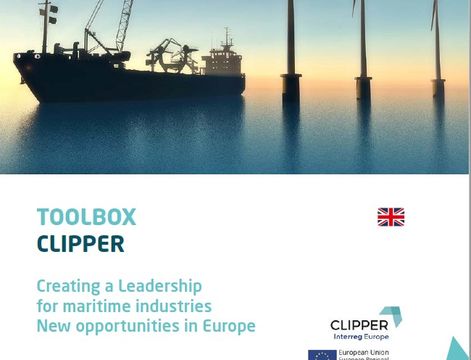
Toolbox
Publication of the CLIPPER toolbox - english and french version
Seven regions. 1 goal. Boosting the competitiveness of SMEs in Europe’s maritime industries
CLIPPER is an innovative interregional cooperation project that brings together seven pro-active regions to address the negative impact the global economic recession has had on Europe’s maritime sector. This sector is also suffering from growing competition from emerging countries.
The overall aim of the project is to develop better public policies to support the competitiveness of Small and Medium Sized Enterprises (SMEs) working in Maritime Industries in Europe.
The regional partners involved - made up of experts from regions, universities and private companies – are exploring and implementing new ways of supporting SMEs to improve their industrial performance, the strength of their value chains and clusters, and access to international markets and finance.
In particular, the project is supporting the SMEs to develop innovative business strategies focused on diversification and differentiation that help them to create jobs and growth in the Blue Growth sector.
The project is based at regional level because they have the ability to move quickly, utilise the resources needed, and bring together the partners required to improve the competitiveness of SMEs in their traditional activities, particularly in shipyards, while also helping them to become leaders in developing markets such as Marine Renewable Energies.
Regions are also usually the managing authorities for structural funds and have the competences required to drive forward economic development in their territories.
The project partners will develop action plans for each of their territories and design political recommendations that will aim to make positive changes to public policy at local level, in line with the analysis of relevant national and European contexts.
Continuous exchange and discussion with the project’s stakeholders will ensure that they better identify challenges faced by SMEs, and guarantee coherence between their needs and the tools developed.
The links developed with SMEs during preparatory work will ensure that they benefit directly from the project.
CLIPPER's results, and their long-term use, will provide significant support for public authorities and European institutions, helping to improve their business strategies for maritime industries.
€1,086,023.00
SME competitiveness
The 2014-2020 regional ERDF OP has been adopted by the Region in line with the RIS3. More than 50% of the total funds of the Programme are dedicated to innovation and competitiveness. The main structuring projects, such as technology equipment needs, have already been identified with regional stakeholders.
However, more specific actions for SMEs support still need to be developed. The key objective 3.2 of the Regional ERDF OP is aimed at "improving SMEs competitiveness to face economic mutations" but no specific action has been identified yet for the maritime industries field.
The maritime industries field has important capital-related needs and is facing a reconversion since the shutting of some historical shipyards since the end of the 1980s. Furthermore, SMEs are developing new competencies which give them the capacity to look at new and emerging markets such as Marine Renewable Energies (MREs). In addition, maritime industries involve a new integrated approach applied to a large range of economic activities. Each link of the value chain must be enhanced towards industrial performance in order to be more competitive in international markets.
Therefore, SMEs must be supported in those differentiation and diversification strategies, partly through the regional ERDF OP. It is necessary to take into account the specificities and evolutions of the sector to define the most adequate public policies.
The policy instrument’s objectives include one of sustainable development by increasing Blue and Green Growth, i.e. through activities of regional SMEs. The policy instrument includes a specific objective related to SMEs competitiveness (Axe 3).
Its priorities concentrate also on research& Innovation (relationship between academia and SMEs), and Energy (marine platforms). It should be improved in order to include a “challenge-based” approach, encouraging business strategies focused on diversification and differentiation towards the production of new sources of energy, and supporting collaboration between European SMEs to establish industrial partnerships.
The ERDF is a policy instrument with different financing measures meant to support SMEs. Axis 3 measures shall support the realization of the goals of the regional innovation strategy in the field maritime industry in Schleswig-Holstein (SH). The maritime industry is an intersection of two policies in Schleswig-Holstein: the maritime economy and renewable energy sources.
Furthermore, the ERDF is linked to the RIS3 which includes a smart specialization focused on maritime economy and renewable energy sources. In both fields, SMEs are very important for future activities with growth and jobs.
Nonetheless, this policy instrument must now be completed by concrete actions to be actually implemented. The needs of maritime industries SMEs must be better identified and compared to those of the partner regions.
The Asturian RIS3 has identified several priority activities, among which is included one dedicated to maritime industries: naval and offshore wind.
Three fields of activity for maritime industries have been identified: fishing, transport and offshore energy.
In reference to the offshore energy, the strategy focuses on new emerging markets but no specific action has been identified so that SMEs can take advantage of the new opportunities in these new markets (MRE for ex.).
Moreover, Asturias ERDF OP, which encompasses a Thematic Objective focused on competitiveness of SMEs (TO3) (It includes the support to the capacity of SMEs to grow in regional, national and international markets, and to engage in innovation processes) does not mention specific actions to carry out but indicates that this objective must be aligned with the Asturian RIS3.
Therefore RIS3 should be improved in order to better define how maritime industries’ SMEs can be supported to access and consolidate their activity in the emerging markets.
This policy instrument must now be completed by an Action Plan focused in improving SMEs competitiveness by strengthening value chains, the internacionalization and supporting collaboration between European SMEs to establish industrial partnerships.
In South West Finland, the ERDF funding is focused on three thematic objectives:
- enhancing the competitiveness of SMEs;
- strengthening research, technological development and innovation;
- and supporting the shift towards a low-carbon economy in all sectors.
This means structural changes, new operating models, product development, investments and development of multi-sectoral expertise. In the fast-changing world, we need to update our mindset regarding structural funds so that regions and companies will have sufficient means to reshape operating approaches.
The new program period has started in an economic situation – both nationally and regionally - that is entirely different from that of the previous programming period. The operational environment is increasingly uncertain, as better results and effectiveness are expected from the activities.
Structural Funds are divided into the national Europe 2020 strategy thematic objectives. Improving the competitiveness of SMEs has been allocated ca 40% of ERDF funding.
Regional emphasis in maritime sector is to create long-term guidelines for development measures to make Finland an internationally attractive maritime industry cluster.
County Development Strategy (CDS), the regional development policy, is the main strategic document at county level for long-term socio-economic development which defines main development priorities and measures for their implementation. It recognizes all needs and development potentials on county level from one side, and builds future structure for sustainable development based on guidelines and development priorities determined by the strategies from national level (Industrial strategy and Smart specialization strategy) on the other side.
Vision of development: Split Dalmatia County is a highly-developed, marine-oriented, open Euro-Mediterranean region with competitive economy. Since the shipbuilding industry is on the first place by the share in the total employment at the county level, with 50% of total exports on County level, Split-Dalmatia County bases its future development in the maritime industries with a focus on specialization and development of high technology. General actions are planned for SMEs competitiveness support (e.g. internationalisation, innovation, clustering, finance…). Nonetheless, this development strategy needs concrete actions targeting maritime SMEs in order to become actual and concrete.
Scotland ERDF OP includes a Thematic Objective focused on competitiveness of SMEs (TO3). The main feature of TO3 is to support the capacity of SMEs to grow in regional, national and international markets, and to engage in innovation processes. It has been acknowledged that Scotland needs to increase growth readiness and the ambition of SMEs as they make up 99% of the business base. TO3 should be improved in order to better support maritime industries’ SMEs, notably by encouraging diversification and differentiation business strategies towards for instance the production of new sources of energy. Indeed, no specific action has been identified yet for the maritime industries field. SMEs are more and more active in new and emerging markets such as MRE. Each link of the value chain must be enhanced towards industrial performance in order to be more competitive in international markets. Therefore, SMEs must be supported in their strategies, partly through the ERDF OP. In addition, improvements need to be made to tackle the lack of leadership capacity for a sustainable growth strategy.

Publication of the CLIPPER toolbox - english and french version
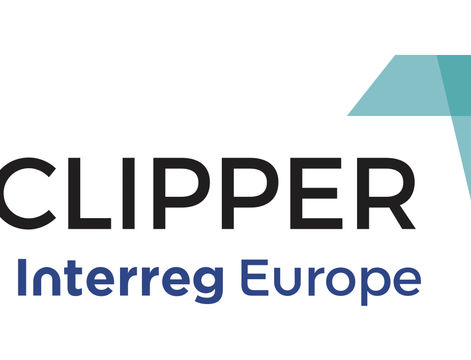
Gathering over 300 participants, the CLIPPER Final Conference provided an opportunity for maritime industry stakeholders from across the whole of Europe to come
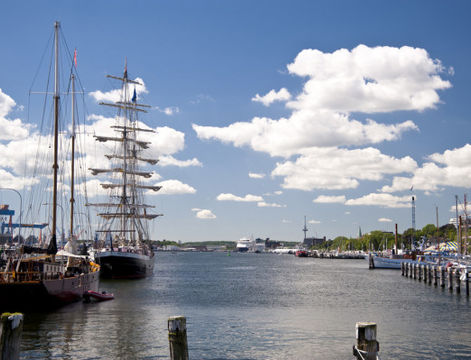
Kiel University R&D Centre is delighted to announce the successful development of three case studies and the implementation of its action plan.
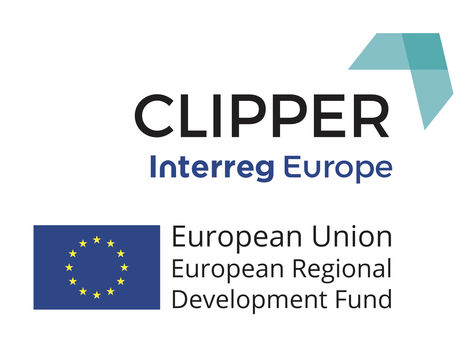
Final preparations are underway for the CLIPPER Final Conference that will be held next week.
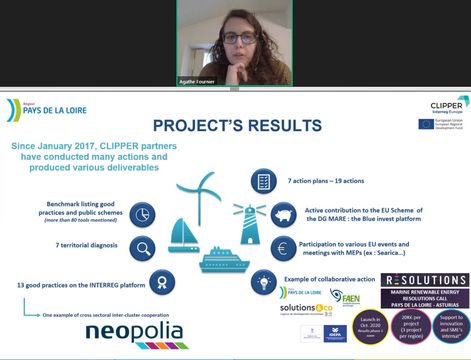
Pays de la Loire Region presented the Neopolia cluster in the Increasing SME competitiveness through cross-sectoral Inter-cluster webinar.
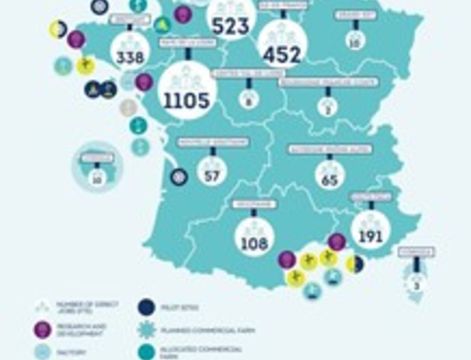
Pays de la Loire Region, first MRE Region in France
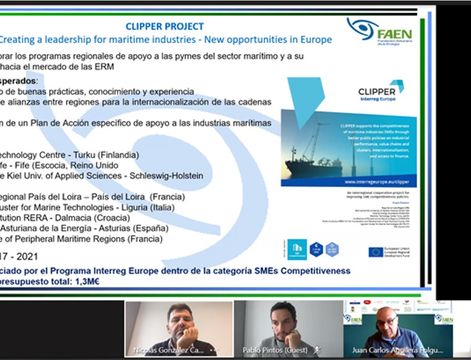
CLIPPER Project highlighted during FAEN meeting with MEP Nicolás González Casares to discuss the industrial chain associated with the energy sector.
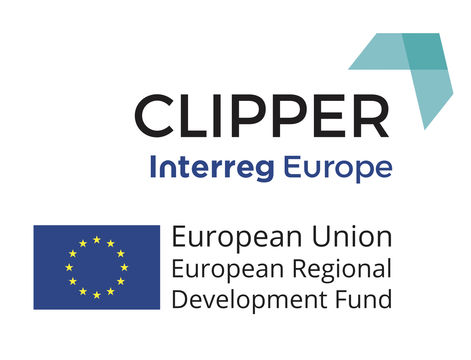
The article below provides an update on the various action plans of the CLIPPER partners.
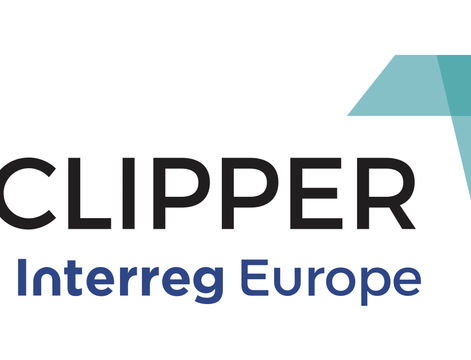
CPMR highlights the importance of an EU Industrial Strategy during the annual CLIPPER meeting.
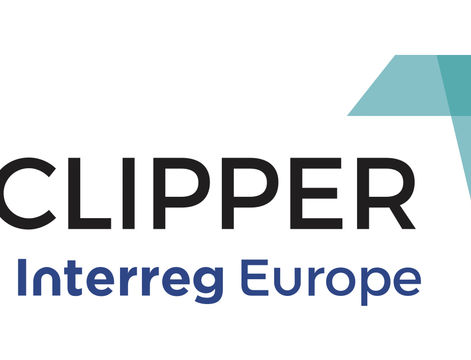
On Wednesday 17 June (14:00-15.15 CEST), the Interreg Europe Policy Learning Platform will organise a webinar on building resilient economies.